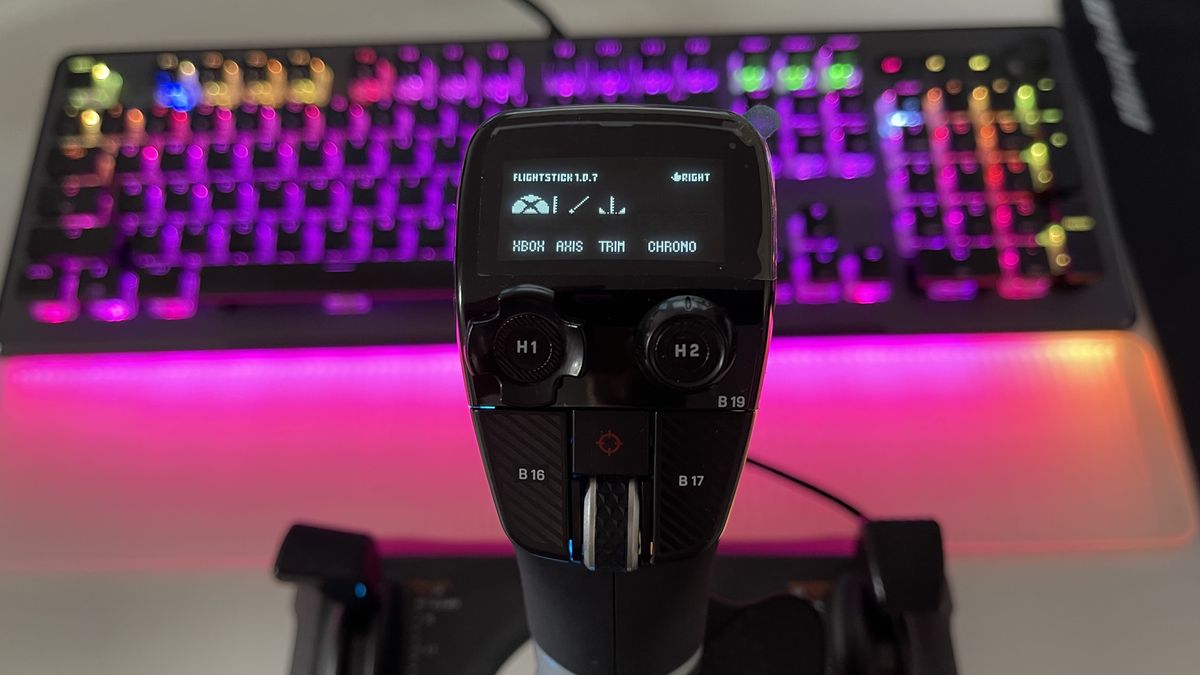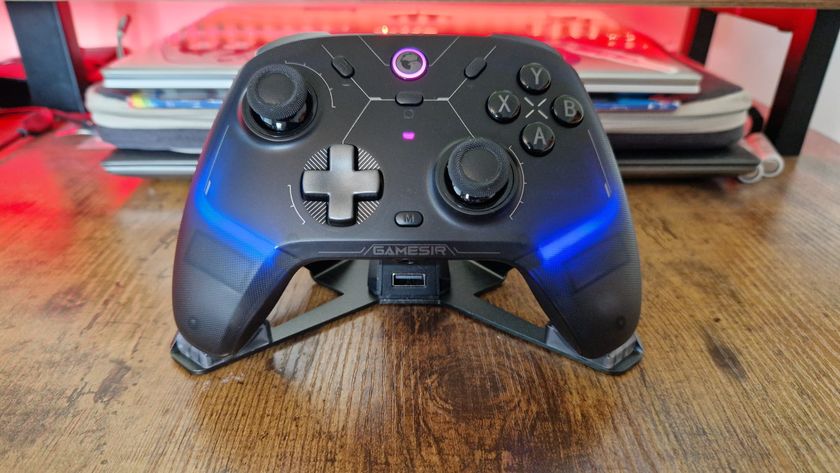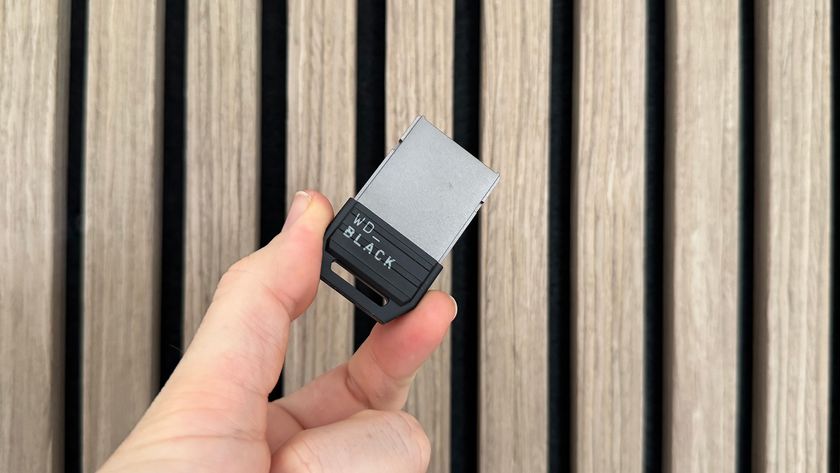12DOVE Verdict
The Turtle Beach VelocityOne flight stick brings a surprising number of bells and whistles to your flight sim for the price. We were impressed by the wide range of functions available to you and the overall quality of the build for your money. While the base could use a little more weight to remain sturdy, this is an excellent place to start your flight sim experience.
Pros
- +
Huge number of functions
- +
Feels expensive
Cons
- -
Base isn’t heavy enough
Why you can trust 12DOVE
If you’ve ever tried to fly a plane in Microsoft Flight Simulator 2020 using a mouse and keyboard, you’ll understand that the experience is something akin to performing keyhole surgery while wearing a giant foam finger. A real Airbus A320 has 575 individual buttons and knobs, and there’s only so far you can get in trying to simulate the experience of controlling one if you’re relying on holding down the shift and alt keys. For serious flight sim enthusiasts, a HOTAS or flight stick is a must.
Usually that’s the preserve of Thrustmaster, whose Warthog HOTAS and flight sticks were developed in collaboration with the flight sim community and hit a premium price point north of $300. Logitech G’s X56 has also been a strong option for years now, priced slightly lower at around $240.
So what Turtle Beach is trying to do with this PC and Xbox-compatible $129.99 VelocityOne model is no less than a major disruption of the market. More affordable joysticks for PC and Xbox aren’t allowed to look this shiny, or offer this many features. And coming from a manufacturer that’s arguably better known for headsets, it might seem a bit too good to be true.
Spoiler: it’s not. This is a really impressive piece of kit for the price, so let’s delve into the nuts and bolts of it and pinpoint exactly why it’s a bargain.
| Programmable buttons | 27 |
| Connection | USB-C to USB-A (3m cable) |
| Compatibility | Xbox, PC |
| Haptics | Yes |
Design and Features
Technically, this isn’t a HOTAS, although it does feature a flaps lever and a throttle lever. Instead, it’s a bit of a hybrid - a flight stick with all the functionality of a HOTAS, if not the familiar shape.
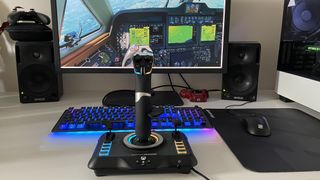
Given the aforementioned cornucopia of controls in most flight sims, the VelocityOne’s replete with a large number of buttons, hat switches, and even an OLED display and a trackpad. It’s an innovative combination of features, and we haven’t seen anything like it on the market before.
Starting at the base of the unit, eight face buttons are split into two banks of four, lined up below each lever. The two levers themselves also have two extra ‘buttons’ - you’ll feel an extra click at 0% and 100% throttle, and these register in-game as buttons 9-12.
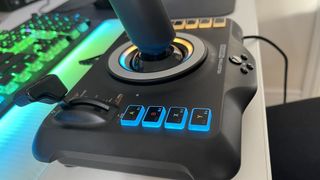
On the flightstick you have two hat switches, one of which can also be depressed for another function (button 19). Two more buttons sit either side of a scroll wheel, particularly handy for adjusting trim, and above that wheel sits a track pad. Then of course, there’s a trigger.
A textured aluminium ring around the joystick rotates for still another function - the flight configurator, and finally right at the front of the base you’ll find the usual controller-style buttons - start and select in the old parlance, along with a share button and the Xbox button.
Frankly, that’s an absurd number of individual inputs, and that’s exactly what’s required in any flight sim. If you’re taking holiday goers to Malaga in Microsoft Flight Sim or dogfighting in DCS, you’ve got everything you need here without having to invest in huge multi-panel rigs at great expense.
Performance
The joystick itself has a significant amount of resistance, which carries some benefits. Firstly it makes for some precise inputs. Looser joysticks don’t give you the same sense of a precise position, and having a bit of push-back from the device makes it easier to just add a touch of nose down without inadvertently plunging towards ground and terrifying your passengers, “sink rate” warnings ringing in everyone’s ears.
It can be a divisive feel, though. Such high resistance means the joystick always wants to snap back to centre, so if you’re performing small inputs around the centre point, it’s trickier to make them precise. Rather than making a neat circle around the centre point, you’re often being ‘sucked in’ and then overcompensating by pulling too hard the other way. It takes some getting used to, and Thrustmaster’s pricier Warthog HOTAS definitely offers more precision in that regard.
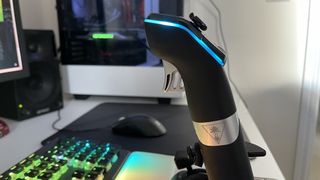
That stiffness also flags up a small issue in the design - the base is a little on the light side. If you’re operating the flight stick without another stabilising hand on the throttle, aggressive inputs - like the ones you’d sometimes make in a combat flight sim - might cause the base to tip or shift, which can be annoying.
Those are the only performance issues here, though. Otherwise every input, from the face buttons to the hat switches, feels solid and dependable and the overall high build quality and premium construction materials make it a joy to pilot with.
The display at the top of the flight stick is an unexpectedly useful addition, too, giving you readouts for axis, trim and chrono. The trim display is especially handy if you’re hopping between planes in Microsoft Flight Sim and not yet familiar with each model’s instrument panel layout. It’s nice to have the trim in one failsafe location regardless of the plane you’re in.
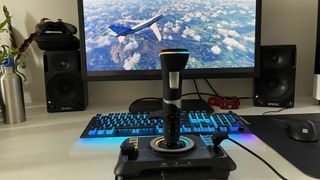
Should you buy the Turtle Beach VelocityOne flight stick?

Turtle Beach has produced a real sweet spot here in price and features for flight sim heads, despite a couple of small design issues. In a perfect world the base would be heavier, but we still love to fly with this stick thanks to its great materials, huge number of functions, and bonus display on the flightstick. Turtle Beach really seems to have a knack for entering the sim space - let’s see more like this, please.
If you're after an entry point into the world of joysticks, there's no longer a need to sacrifice some of the previously more premium features - the VelocityOne offers everything you need to get stuck in.
How we tested the Turtle Beach VelocityOne flight stick
Considerable flight time was logged in both Microsoft Flight Simulator 2020 and DCS to test this flightstick. Commercial and combat piloting require very different input types and flying styles, so what works for one might not be best suited to the other. We’ve yet to embark on our Dark Souls playthrough with this flightstick, but we reckon it’s possible. For more information on how we test controllers, be sure to check out the full 12DOVE Hardware Policy.
We're keeping you stocked with all the best PC controllers and the best racing wheels for PC if you're kitting out a full setup. Or, take a look at the best gaming desks and the best gaming chairs for a full control-panel style experience.
Phil Iwaniuk is a multi-faceted journalist, video producer, presenter, and reviewer. Specialising in PC hardware and gaming, he's written for publications including PCGamesN, PC Gamer, GamesRadar, The Guardian, Tom's Hardware, TechRadar, Eurogamer, Trusted Reviews, VG247, Yallo, IGN, and Rolling Stone, among others.
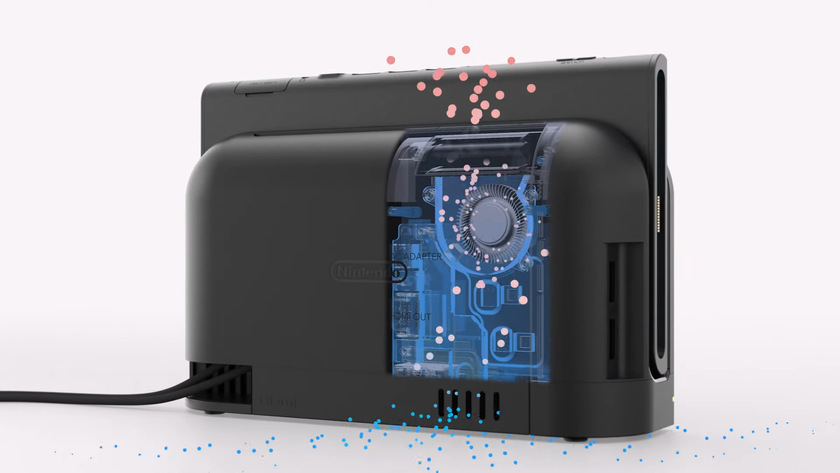
Nintendo says the Switch 2 "isn't simply an improved Nintendo Switch, we redesigned the system from the ground up," and after 8 years, I'd sure hope so
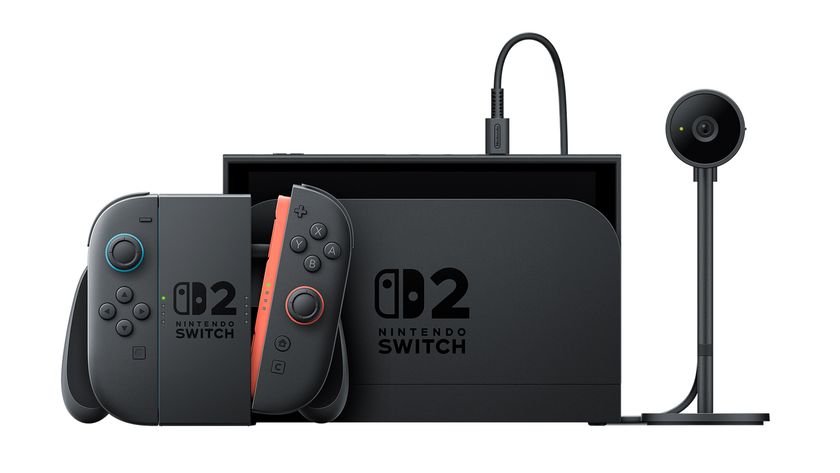
Japan's "multi-language" Switch 2 costs 20,000 more yen, or $130 more dollars, than the Japanese-only version

Elden Ring is getting a fancy new name on Switch, new weapons and armor, and new horse clothes on all platforms
